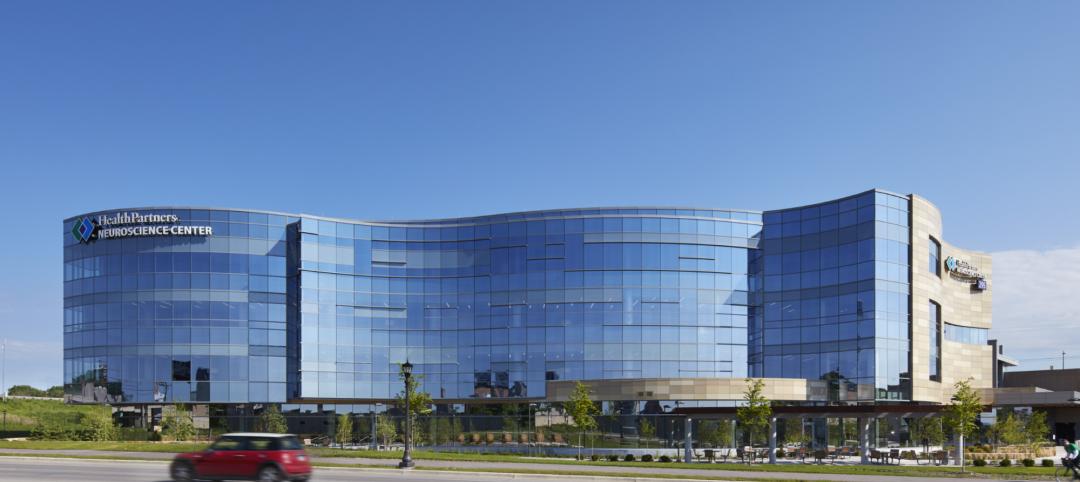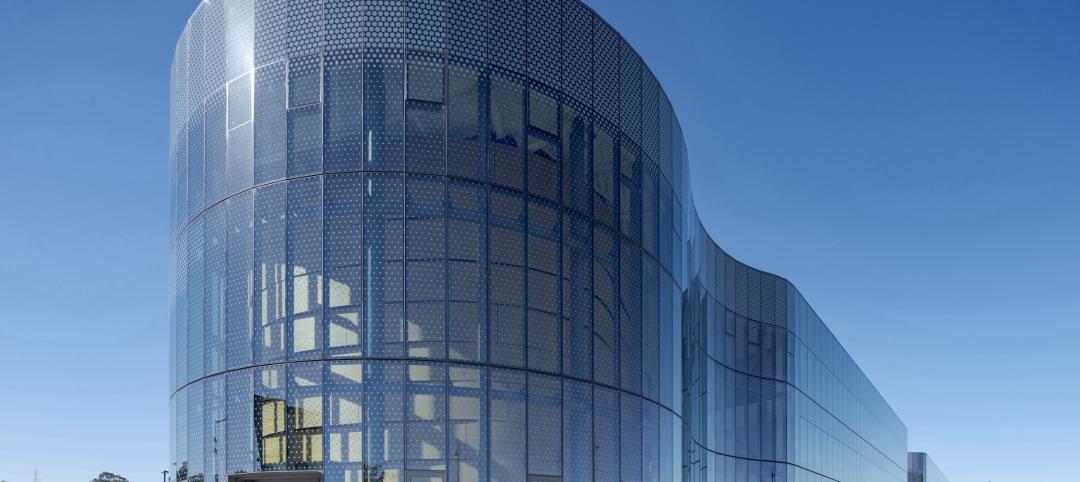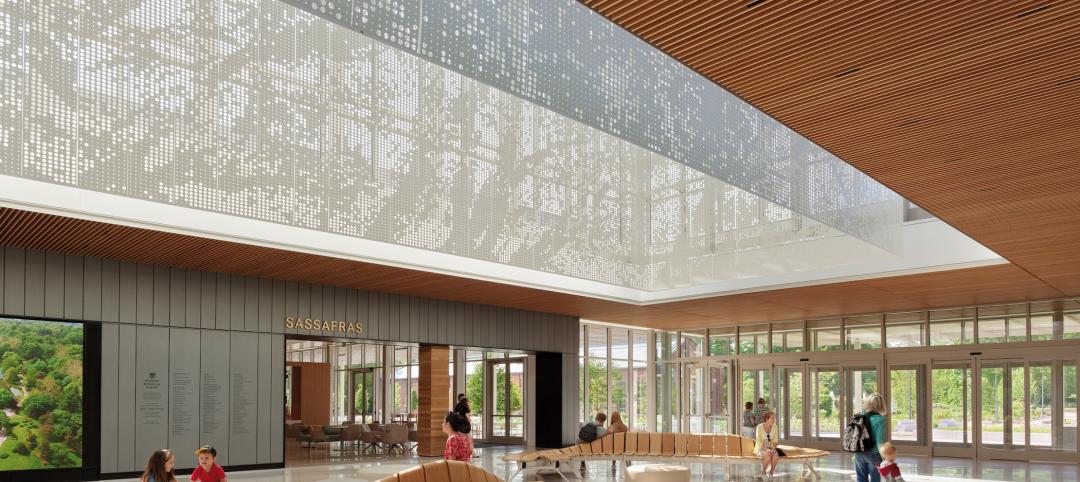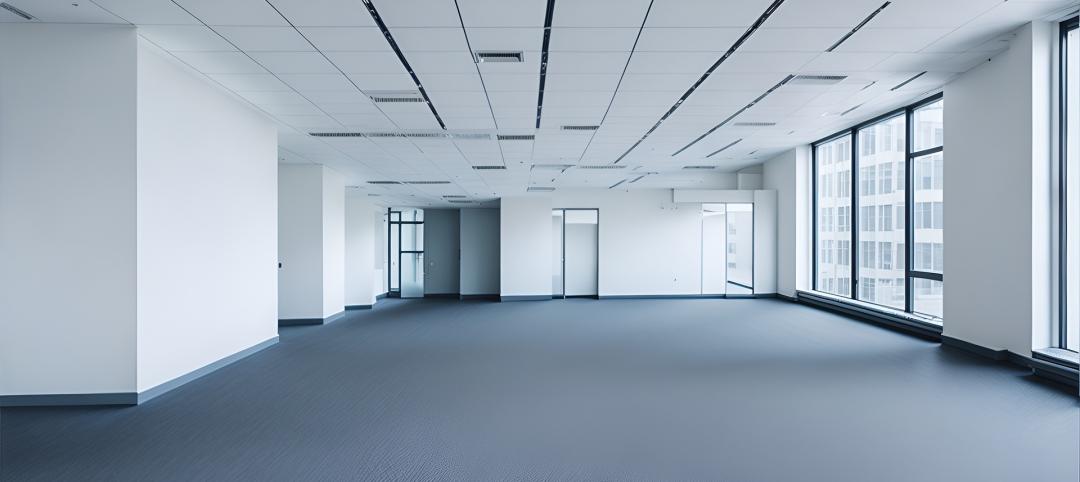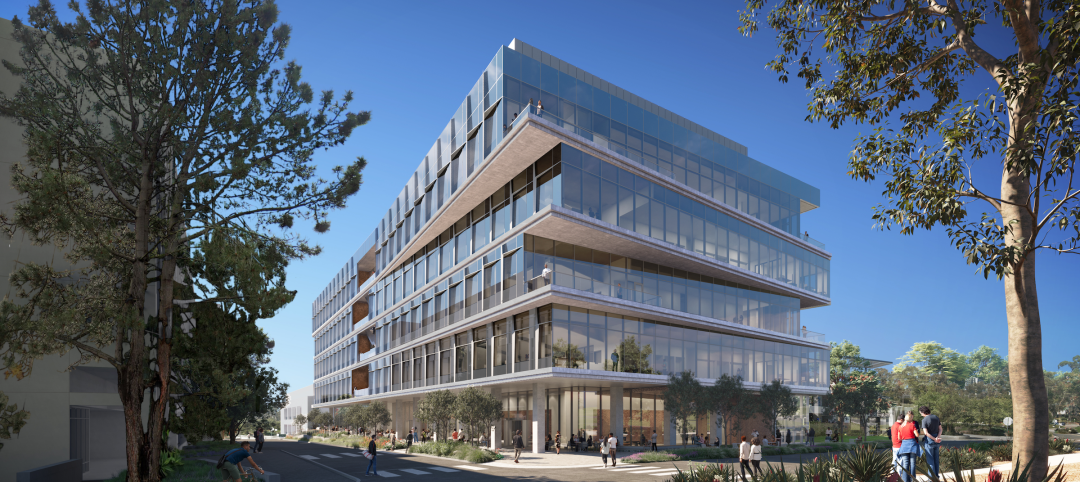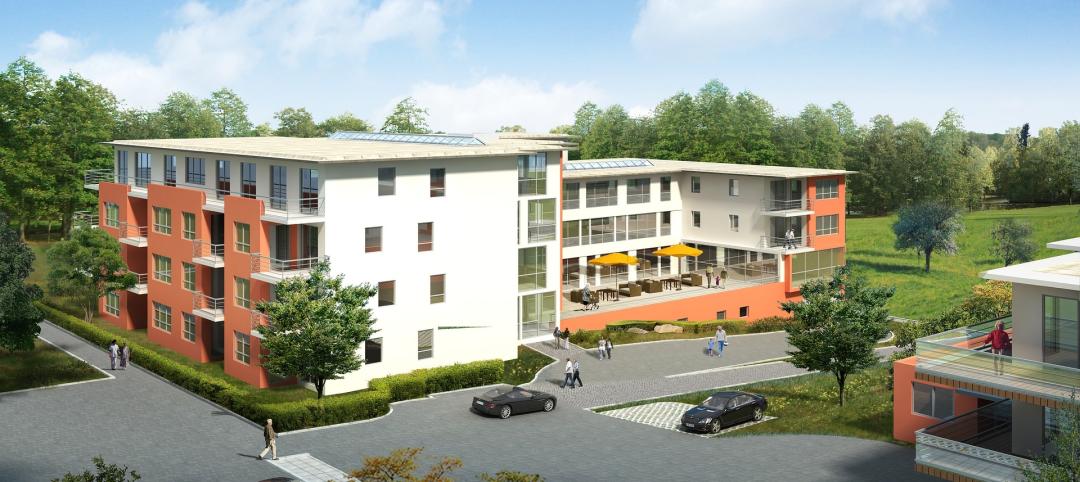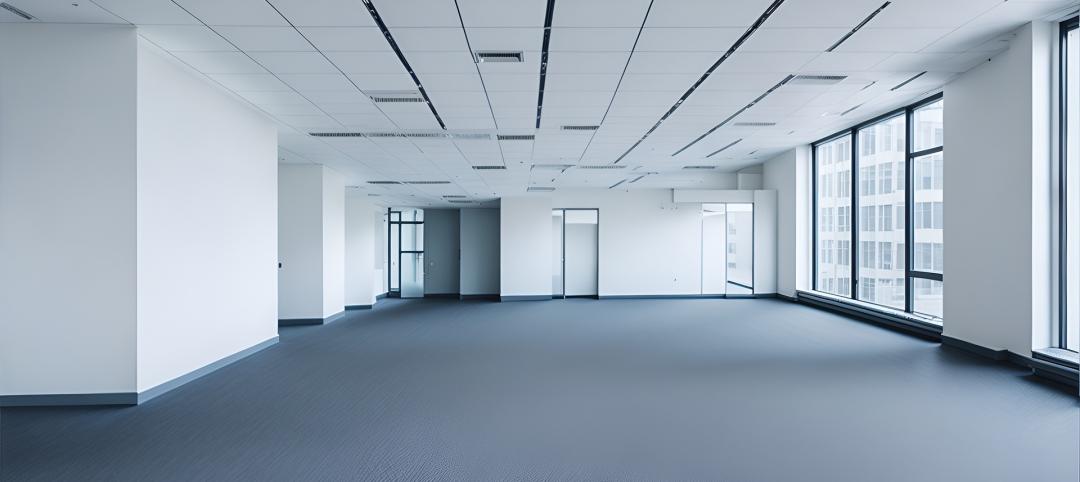When the Francis Crick Institute opens this summer, in London, it will be the quintessence of the future direction of science and technology facilities.
TOP 40 SCIENCE + TECHNOLOGY ARCHITECTURE FIRMS
Rank, Firm, 2015 Revenue
1. Perkins+Will $60,040,000
2. HDR $56,664,000
3. HOK $50,435,000
4. Payette $35,458,760
5. Stantec $34,755,593
6. Flad Architects $29,730,000
7. SmithGroupJJR $26,205,000
8. DGA $21,133,997
9. Page $19,500,000
10. ZGF Architects $18,405,848
TOP 30 SCIENCE + TECHNOLOGY CONSTRUCTION FIRMS
Rank, Firm, 2015 Revenue
1. Skanska USA $461,469,485
2. Suffolk Construction Co. $307,964,240
3. Whiting-Turner Contracting Co., The $141,886,037
4. JE Dunn Construction $100,808,913
5. Turner Construction Co. $91,930,708
6. Gilbane Building Co. $52,712,000
7. DPR Construction $40,625,000
8. Jacobs $24,060,000
9. Sundt Construction $23,322,783
10. Hill & Wilkinson General Contractors $21,132,000
TOP 50 SCIENCE + TECHNOLOGY ENGINEERING FIRMS
Rank, Firm, 2015 Revenue
1. Jacobs $51,420,000
2. Affiliated Engineers $29,447,000
3. Vanderweil Engineers $21,653,900
4. CRB $10,200,000
5. RMF Engineering $6,285,000
6. Mazzetti $5,199,075
7. Thornton Tomasetti $4,686,534
8. Newcomb & Boyd $3,466,430
9. Rist-Frost-Shumway Engineering $3,335,000
10. Global Engineering Solutions $3,275,000
The 980,000-sf, $931 million facility is the result of a unique financing mechanism that brought together three of the U.K.’s heaviest funders of biomedical research—the Medical Research Council, Cancer Research UK, and the Wellcome Trust—and three leading universities—University College London, Imperial College London, and King’s College London.
“The Crick,” as it’s known, is organized into four “laboratory neighborhoods” that encourage multidisciplinary interaction among its 1,500 scientists. Offices and labs have floor-to-ceiling glazing. The facility is designed around two atria that allow visibility throughout the building and between floors.
The design emphasizes communal space by enabling people to peer into multiple floors, according to Larry Malcic, AIA, LEED GA, SVP/Design Principal in the London office of HOK, which designed the lab. The idea, he said, is to “put science on display and promote collaboration.”
Projects like The Crick practically force scientists, engineers, and technicians from disparate fields to interact. “Things are happening between disciplines now, and there are a lot more buildings with oddball combinations of sciences,” says HDR Design Principal Dan Rew, AIA, LEED AP.
The state of Maryland’s $180 million Public Health Lab, which opened last year at Forest City’s Science Park, in Baltimore, exemplifies this pattern. HDR provided architectural and engineering services for the five-story, 200,000-sf lab, which does testing, consulting, and offers regulatory support related to infectious disease, epidemiology, environmental, and regulatory public health issues.
The open-lab concept allows operations to scale up and mobilize quickly in the event of an emergency, says HDR VP Warren Hendrickson, AIA, LEED AP BD+C. The ground floor, where first responders train, is visible from the street. The building is also linked to the Centers for Disease Control and Prevention.
In Seattle, the 270,000-sf headquarters of the Allen Institute is programmed for team science, says Kay Kornovich, RA, LEED AP, NCARB, Managing Director, Perkins+Will, Seattle. She says the institute wanted to break down walls between “carpet” people (managers) and “vinyl” people (researchers).
The building, which opened last December, focuses on brain and cell sciences. It is organized in a series of “petals” grouped around a six-story atrium. Cantilevered into the atrium are glass-walled collaboration pods outfitted with comfortable seating and whiteboards. “In any part of the building, you can see science and meetings going on,” says Kornovich.
Saving money can be the impetus for combining disciplines and buildings. Shepley Bulfinch’s design for the University of Houston’s Health and Science Building II connects the nine-story, 300,000-sf structure to H&S Building I. This will allow them to share loading docks, animal care facilities, and expensive equipment like NMR machines, says Luke Voiland, AIA, LEED AP, Principal in the firm’s Houston office.
“Clients are trying to do more with less, like bringing physics and engineering departments together,” adds Ed Burton, SmithGroupJJR’s S+T National Practice Leader. He points to the $80 million, 136,500-sf Senator Daniel K. Inouye Defense POW/MIA Accounting Agency Center for Excellence, which opened last September at Joint Base Pearl Harbor–Hickam, in Oahu, Hawaii. The lab consolidates operations that had been spread out over three military installations.
Some S+T facilities are incorporating business development into their objectives. Half of the space in the H&S building at the University of Houston will be used to train future pharmacists, and the other half for drug discovery research. This trend might explain why computational, simulation, and STEM labs are all the rage now. “The incubator mentality is creeping into labs,” says HDR’s Rew.
Last September, Skidmore, Owings & Merrill, in collaboration with the U.S. Energy Department’s Oak Ridge National Laboratory, completed the 210-sf Additive Manufacturing Integrated Energy demonstration project. AMIE 1.0 is a 3D-printed building designed to produce and store renewable power and share energy wirelessly with a 3D-printed vehicle developed by the DOE. The project aimed to demonstrate the use of bidirectional wireless energy technology and high-performance materials to achieve independence from the power grid at peak-demand periods.
Philip Enquist, FAIA, SOM’s Partner in Charge of Urban Design and Planning, sees AMIE 1.0 as “the beginning of a new chapter” in building for a resilient future.
Leo A Daly is working on the Emergent Technologies Institute, located on 6.5 acres of Florida Gulf Coast University’s campus, in Fort Myers. Public and private researchers will develop and test wind, solar, and agricultural technologies at this 24,600-sf incubator lab.
“We designed an infrastructure that provides a backbone for research, but remains adaptable to the academic and business communities’ needs,” says Robert Thomas, AIA, LEED AP, Leo A Daly’s Principal of S+T.
RETURN TO THE GIANTS 300 LANDING PAGE
Related Stories
Mixed-Use | Sep 10, 2024
Centennial Yards, a $5 billion mixed-use development in downtown Atlanta, tops out its first residential tower
Centennial Yards Company has topped out The Mitchell, the first residential tower of Centennial Yards, a $5 billion mixed-use development in downtown Atlanta. Construction of the apartment building is expected to be complete by the middle of next year, with first move-ins slated for summer 2025.
Healthcare Facilities | Sep 9, 2024
Exploring the cutting edge of neuroscience facility design
BWBR Communications Specialist Amanda Fisher shares the unique considerations and challenges of designing neuroscience facilities.
Giants 400 | Sep 6, 2024
Top 100 Architecture Engineering Firms for 2024
Stantec, HDR, Page, HOK, and Arcadis North America top Building Design+Construction's ranking of the nation's largest architecture engineering (AE) firms for nonresidential building and multifamily housing work, as reported in BD+C's 2024 Giants 400 Report.
Office Buildings | Sep 6, 2024
Fact sheet outlines benefits, challenges of thermal energy storage for commercial buildings
A U.S. Dept. of Energy document discusses the benefits and challenges of thermal energy storage for commercial buildings. The document explains how the various types of thermal energy storage technologies work, where their installation is most beneficial, and some practical considerations around installations.
Giants 400 | Sep 6, 2024
Top 200 Architecture Firms for 2024
Gensler, HKS, Perkins&Will, Corgan, and Populous top Building Design+Construction's ranking of the nation's largest architecture firms for nonresidential building and multifamily housing work, as reported in BD+C's 2024 Giants 400 Report.
Office Buildings | Sep 5, 2024
Office space downsizing trend appears to be past peak
The office downsizing trend may be past its peak, according to a CBRE survey of 225 companies with offices in the U.S., Canada, and Latin America. Just 37% of companies plan to shrink their office space this year compared to 57% last year, the survey found.
University Buildings | Sep 4, 2024
UC San Diego’s new Multidisciplinary Life Sciences Building will support research and teaching in both health and biological sciences
The University of California San Diego has approved plans for a new Multidisciplinary Life Sciences Building, with construction starting this fall. The 200,000-sf, six-level facility will be the first building on the UC San Diego campus to bridge health science research with biological science research and teaching.
Codes and Standards | Sep 3, 2024
Atlanta aims to crack down on blighted properties with new tax
A new Atlanta law is intended to crack down on absentee landlords including commercial property owners and clean up neglected properties. The “Blight Tax” allows city officials to put levies on blighted property owners up to 25 times higher than current millage rates.
Resiliency | Sep 3, 2024
Phius introduces retrofit standard for more resilient buildings
Phius recently released, REVIVE 2024, a retrofit standard for more resilient buildings. The standard focuses on resilience against grid outages by ensuring structures remain habitable for at least a week during extreme weather events.
Adaptive Reuse | Aug 29, 2024
More than 1.2 billion sf of office space have strong potential for residential conversion
More than 1.2 billion sf of U.S. office space—14.8% of the nation’s total—have strong potential for conversion to residential use, according to real estate software and services firm Yardi. Yardi’s new Conversion Feasibility Index scores office buildings on their suitability for multifamily conversion.




